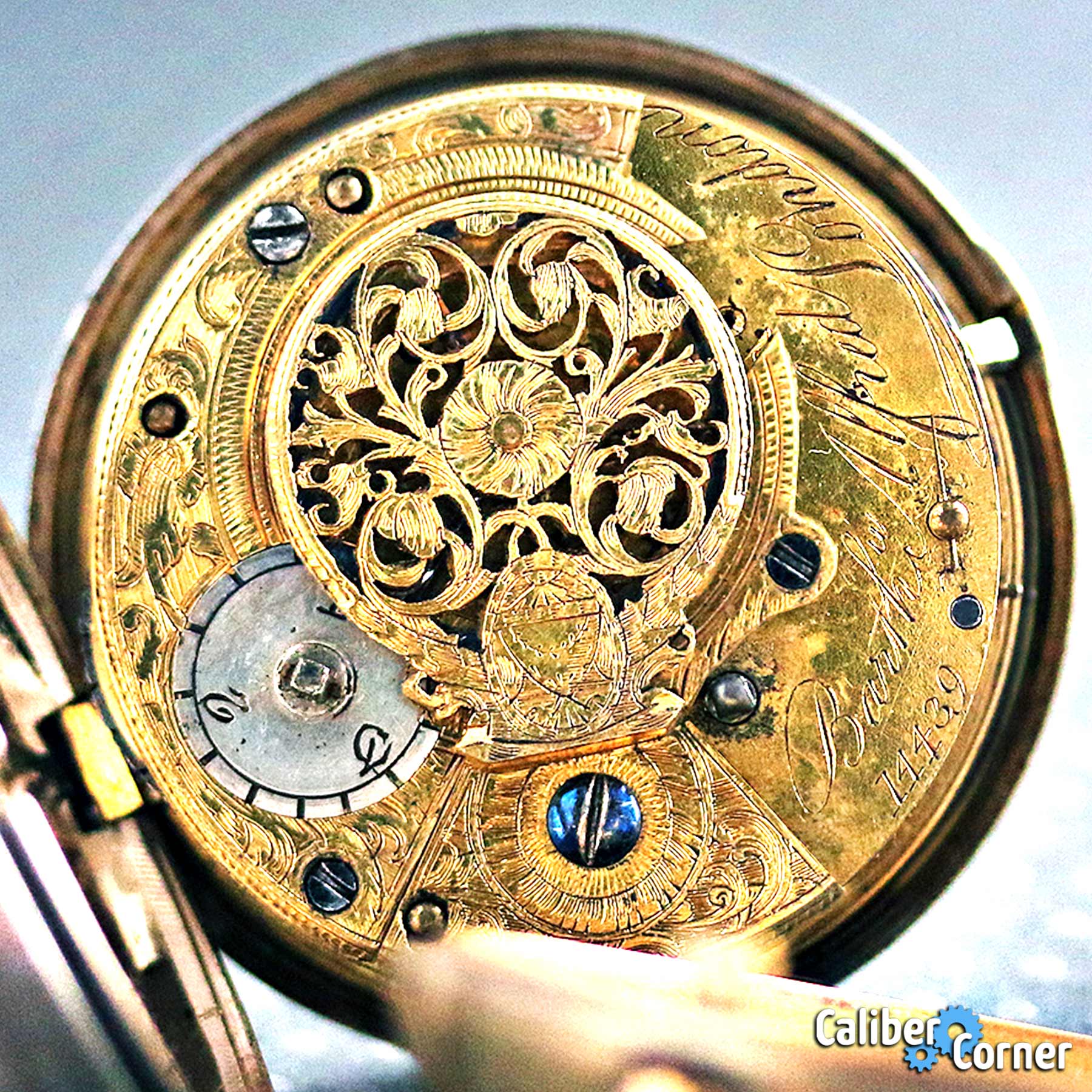

Julien Le Roy, probably the most inventive clockmaker in eighteenth century France, was appointed clockmaker to Louis XV (17101774), an honor that allowed him a workshop in the Louvre. Specifications of Julien Le Roy OTTOMAN / TURK MARKET Pocket Watch. Extremely time consuming and boring, and the result pretty far from the "pith wood method".Julien Le Roy Quarter Repeater Triple Cases Verge Fusee Pocket Watch For Ottoman Previously I've been cleaning out the pinions using pointed peg wood. Having serviced quite many Vostok movements I know that the black goo would have remained without the "pith wood method". However, after having run the parts through my cleaning cycle (70 year old vintage Elma machine), all treated pinions came out looking like new all shiny and beautiful 😃 Probably cleaner than when they left the factory. The green goo came off completely with little effort, but the black goo only partly.

I put a few drops of Horosolv degreaser on the pith wood, and I guess Horosolv degreaser is benzine (or a very similar chemical)!? The movement hadn't been serviced for about eight years and there was a mix of green goo (train wheels) and black goo (centre wheel) between the pinion leaves. I just tried this on a Vostok 2431 (24h motion works) and the result was nothing but spectacular! The last photo is just the mainspring in it's barrel - these are very strong when wound.

Reassembly is just a simple reversal, not forgetting lubrication. At least something like that.I forget the details but there are some nice you-tube videos which explain a whole lot better than my ladybook version. The fusee is shaped such that as the chain unwinds from it under the mainspring power, it exerts less power when fully wound than when the mainspring is at it's weakest ie almost unwound. The bottom brass mainwheel has teeth in it's edge which engage in a lever paw attached to the watch's mainplate. The bottom brass main wheel is fitted with a steel maintaining spring such that the working unit provides maintaining power.Īs the chain is wound onto the fusee (tightening the mainspring at the same time), the ratchet wheel engages with the paws. Click steel in a ready shaped rod can be bought but only if you can source it. Once I filed a new paw from some steel (a nail I think!) which was more than fiddly but satisfyingly worked afterwards. Occasionally there is wear to paws or ratchet wheel teeth (causing slippage on winding the watch) which can often be sharpened with a file (the ratchet wheel can be removed from the fusee & then re-riveted on which is fairly easy with brass). This fusee is in pretty good nick (no cleaning has been done).normally the paws are filled with dried black oily gunk which needs cleaning out (carefully because the paws are very easily dislodged). The teeth of the brass ratchet wheel riveted to the underside of the fusee cone engages in the steel paws when it is together, the click springs providing the engaging pressure. (note - fusee verge watches usually only have one paw/spring). Then separate the bottom brass main wheel from the steel wheel containing the two small steel paws (or "clicks") held by click springs. Once the pin is removed the collar lifts off so the components can be separated: There's a blued steel collar with a brass pin through it holding everything together & this pin needs pushing out - occasionally they need a bit of persuasion with some light hammer knocks but I try to avoid hitting anything unless I really have to: (Apologies for not great quality photos - I find my iphone is quickest for photos & uploading but have some blurring)įirst here's the intact fusee, upright & bottom views. 20th Century mainspring steel was so much better quality that these variations eventually became null & fusees became redundant. They really were an ingenious and elegant solution to early mainsprings varying in their power output depending upon how wound up they were causing variations in timekeeping ability over the overall timepiece.

I'm just in the middle of an English Fusee Lever Pocket Watch restoration & thought I might share the fusee dismantle so readers unfamiliar with them could see what's on the inside & how they work.


 0 kommentar(er)
0 kommentar(er)
